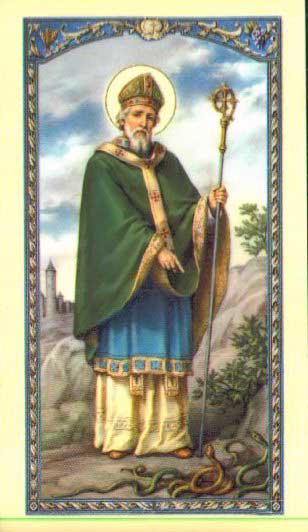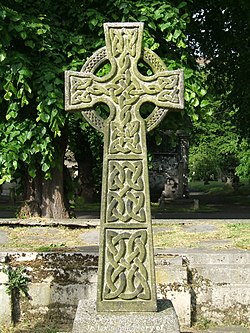Metropolitan Museum of Art
Location:
New York City
Bordering
NYC's Central Park, the Metropolitan Museum of Art is the largest museum in the
United States, housing more than two million pieces in its permanent collection
curated from Europe, Asia, Africa, and the Middle East. In late 2011 and early
2012, The Met re-opened its renovated galleries of American Art and Islamic
Art. Also housed here is the Costume Institute, which contains examples of
fashions through the centuries. Must-See Works of Art: Hokusai's "The
Great Wave off Kanagawa (left), is a signature piece of The Met's Asian Art
collection. The Egyptian Collection includes the Temple of Dendur, an original
temple from 15BC. The small European Collection contains works from some of the
biggest names - Caravaggio, Vermeer, Rembrandt, Van Gogh, Renoir, Gauguin,
Monet.
National Gallery of Art
Location:
Washington, DC
The
National Gallery of Art, established in 1937, is the United States' national
collection of fine art housed on the National Mall in Washington, DC. The
museum is split into West and East Buildings, with the former containing the
bulk of the museum's American and European Collections and the latter
containing mostly modern art and special exhibition space. Entry to the
National Gallery is free. (Note: The National Gallery of Art is not under the
jurisdiction of the Smithsonian Institution.) Must-See Works of Art: The NGA's
prized posession is the portrait of Ginevra de' Benci by Leonardo da Vinci
(left). This is the only Leonardo painting in the Americas.
Museum of Modern Art
Location:
New York City
The Museum
of Modern Art in Midtown Manhattan contains a vast collection of Modernist art
and organizes regular exhibitions of contemporary art in its recently remodeled
galleries. Some of the 20th Century's most recognizable paintings by the likes
of Van Gogh, Rousseau, Pollock, and Picasso grace the walls of the MoMA.
Visitor's Tips for the MoMA: Note that admission to the MoMA is free on Fridays
from 4-8 p.m. (expect crowds). The Modern, the restaurant that is open only to
museum patrons, is one of New York City's Michelin-starred restaurants The
Modern does not accept reservations. Must-See Works of Art: Vincent Van Gogh's
"Starry Night" is incredible to see in person. Other must-see works
include "The Sleeping Gypsy" by Henri Rousseau; "Number 31"
by Jackson Pollock; "Flag" by Jasper Johns; Andy Warhol's
"Campbell Soup Cans."
J. Paul Getty Museum
Location:
Los Angeles, California
The J. Paul
Getty Museum is located in two locations in Los Angeles. The Getty Center, in
Brentwood, is the home for the collection of pre-20th Century European paintings,
sculpture, and furnishings and 19th and 20th Century photographs from Europe
and North America. It is housed in a building designed by architect Richard
Meier, and its Central Garden was designed by Robert Irwin. The Getty Center
receives the bulk of the Getty Museum's total visitors, but the Getty Villa,
located in Pacific Palisades, is also impressive. Here is where the Getty
displays its collection of antiquities, some of which have been controversial
(see the book "Chasing Aphrodite" [Compare Prices]). Must-See Works
of Art:Van Gogh's "Irises;" "Venus Reclining on a Sea Monster
with Cupid" by John Deare; "The Supper at Emmaus" by Bartolomeo
Cavarozzi.
Art Institute of Chicago
Location:
Chicago, Illinois
Impressionist
and Post-Impressionist Art are the highlights of the collection at The Art
Institute of Chicago, a renowned museum located in the city's Grant Park. The
Art Institute also has a collection of African American art. Must-See Works of
Art: Georges Seurat's "A Sunday Afternoon on the Island of La Grande
Jatte" (left) is a famous piece in the Art Institute's collection. Additionally,
there are numerous paintings from Monet, Manet, Cézanne, Renoir, and Cassatt.
In its American Collection, look for Grant Wood's "American Gothic."
Museum of Fine Arts Boston
Location:
Boston, Massachusetts
The more
than 450,000 works of art that make up the Museum of Fine Arts in Boston make
it one of the largest museums in the United States. Its most renowned
collections are its American Art, Egyptian Art, and French Impressionist
paintings. Thanks to Boston's twinning with the city of Nagoya, Japan, the
MFA's Japanese art collection (the Edward S. Morse Collection) is the most
extensive outside of Japan. Chinese art is also on display. Must-See Works of
Art: John Singleton Copley's portrait of Paul Revere (left). Also noteworthy
are Copley's "Watson and the Shark;" Gilbert Stuart's portrait of
George Washington; works by Gauguin, Cézanne, Monet.
Young Museum
Location:
San Francisco, California
This fine
arts institution in San Francisco's Golden Gate Park is renowned for its
American Art collection, including a focus on art specifically from California.
The de Young museum also has a broad collection of art from the Americas,
ranging from pre-Columbian times to the 20th century, and art from Oceania.
More than 13,000 textiles and costumes make up the de Young's significant
textiles collection. Must-See Works of Art:Wayne Thiebaud's "Three
Machines" (left); "Prometheus Bound" by Thomas Cole; Edward Hicks'
"Peaceable Kingdom;" and "California Spring" by Albert
Bierstadt.
Los Angeles County Museum
of Art
Location:
Los Angeles, California
The LACMA,
as it is usually called, is the largest art museum west of Chicago, with an
estimated 100,000 works of art dating from ancient times to present day. Its
best known for its American galleries, which focus on pre-Columbian and Latin
American art. Thanks to perpetually fine weather, the LACMA has numerous
temporary and permanent outdoor installations. Also noteworthy are the Asian
art collections, particular its Korean art collection, which is the largest
outside of Korea, and some elaborate religious pieces from South Asia. Must-See
Works of Art: LACMA's newest star artwork is "Levitated Mass," a
boulder sculpture realized by artist Michael Heizer. "Urban Light"
(left) by Chris Burden is another iconic installation.
Solomon R. Guggenheim
Museum
Location:
New York City
Set in a
distinctive, Frank Lloyd Wright-designed building on the Upper East Side of
Manhattan, the Solomon R. Guggenheim Museum is known for its modern artworks.
Originally called The Museum of Non-Objective Painting when it opened in 1939,
the Guggenheim started with a collection of American and European abstract and
non-objective works. Renamed after its founder in 1952, the Guggenheim now
displays its core abstract collection along with works from all manner of
contemporary art genres, among them Dada, Impressionism, Pop Art, and
Surrealism. Must-See Works of Art: Any number of works by Vasily Kandinsky, an
artist for whom a whole gallery is dedicated. "Paris Through the
Window" by Marc Chagall; Amedeo Modigliani's "Nude;" the Robert
Mapplethorpe Photography Collection.
Smithsonian American Art
Museum
Location: Washington, DC
The
Smithsonian Institution's most popular museum is the American Art Museum, which
is situated in downtown Washington, DC, at Gallery Place. Housed here are works
from all genres, from Colonial-era painting to Folk Art, and representing all
regions of the United States. Must-See Works of Art:Albert Bierstadt's
"Among the Sierra Nevada" (left); "Electronic Superhighway:
Continental U.S., Alaska, Hawaii," a nation-shaped video installation by
artist Nam June Paik; Georgia O'Keefe's "Manhattan;" and "Cape
Cod Morning" by Edward Hopper.












